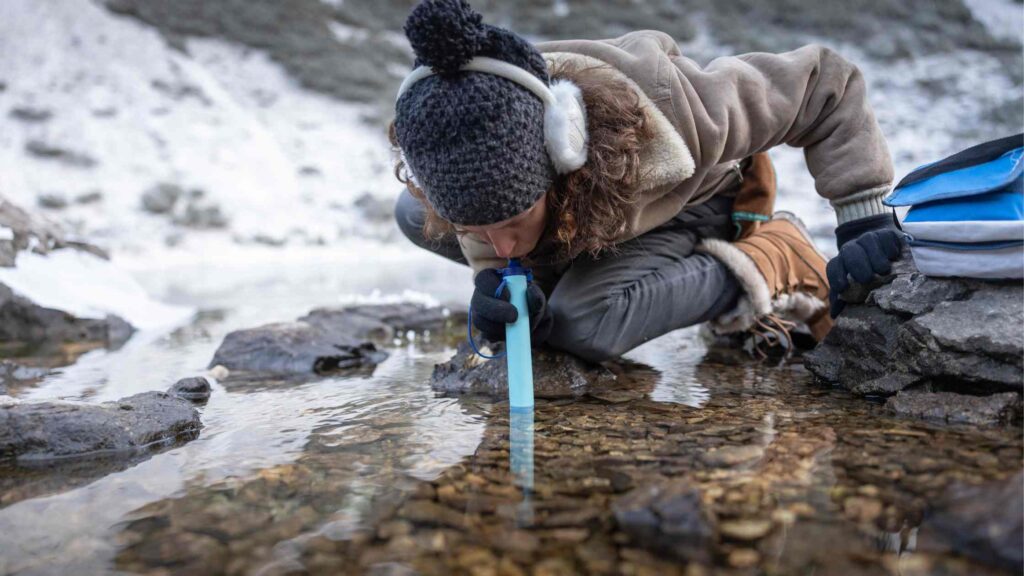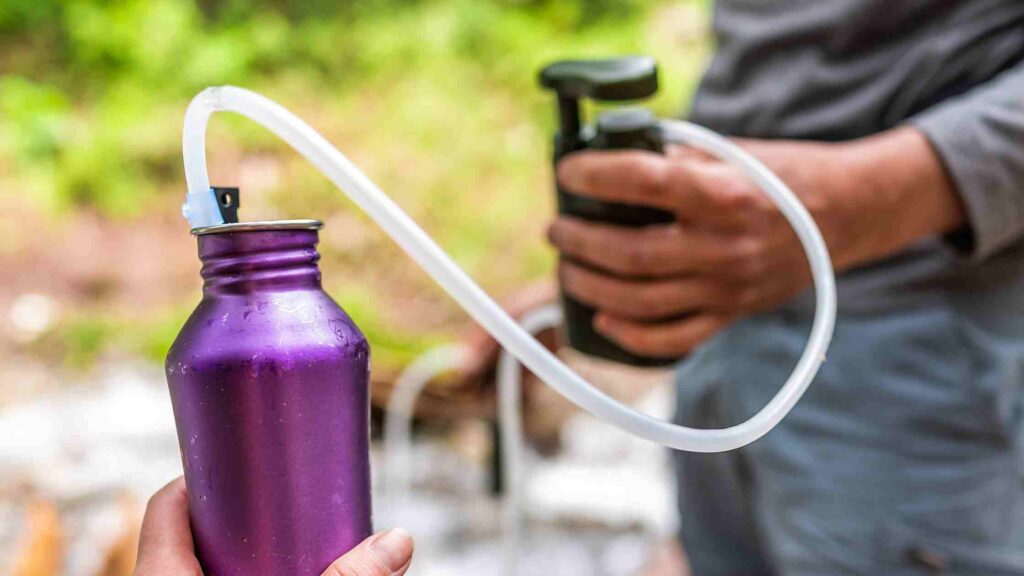In times of crisis, securing clean water becomes paramount for survival. Contaminated water sources pose significant health risks due to potential pathogens and impurities. Understanding and employing effective water purification methods are essential for ensuring access to safe drinking water during disasters. Below, we delve into detailed explanations of 15 reliable water purification techniques:
If you’re like us, you’ve been preparing a water system for emergencies. This is the best way to ensure clean water during a disaster. Here are different ways to do an off-frid water collection and filtration system. Thankfully, we have access to a spring on our property. But this isn’t enough water for our household and family needs. So we opted for rain collection, given that we live in a climate with sufficient rain.

Water Collection Systems for Ultimate Preparedness
When choosing which collection system, consider your climate and whether or not that system makes sense. For example, those who live in a dryer climate, like Colorado, will face legal issues on rain collection. So you may opt in for something like a well. Some of the options listed below are for survival scenarios as well.
Here is a helpful list of options:
- Rainwater Harvesting: Install rainwater collection systems, such as rain barrels or cisterns, to capture rainwater from rooftops or other surfaces. This collected water can be used for various purposes, including drinking, irrigation, and household tasks.
- Surface Water Collection: Collect water from natural surface sources such as lakes, ponds, rivers, or streams. Use a filtration system to remove impurities before using the water for drinking or other purposes.
- Well Water: Drill a well to access groundwater. Install a hand pump or solar-powered pump to extract water from the well for household use.
- Spring Water: If you have access to a natural spring on your property, you can collect spring water directly from the source. Ensure the water is tested for purity and safety before consumption.
- Fog Harvesting: In foggy or coastal regions, fog nets can be used to collect water droplets from the air. The collected water drips down into collection containers for use.
- Dew Collection: Place dew traps or sheets of plastic on the ground overnight to collect dew. In the morning, gather the collected dew and transfer it to storage containers.
- Desalination: If you live near the coast, desalination systems can be used to remove salt from seawater, making it suitable for drinking and irrigation.
- Condensation: Use a condensation collector or solar still to collect water vapor from the air. This method is particularly useful in arid climates where water sources are scarce.
- Snow and Ice Melt: Collect snow or ice during colder months and melt it to obtain water. Be sure to filter or purify the melted water before consumption.
- Greywater Recycling: Install a greywater recycling system to capture and treat wastewater from sinks, showers, and washing machines. The treated greywater can then be reused for non-potable purposes such as irrigation or flushing toilets.
- Water Conservation: Implement water-saving measures such as installing low-flow fixtures, repairing leaks, and practicing water-efficient habits to minimize water consumption and maximize available water resources.

By utilizing these various methods for collecting water, individuals living off-grid can ensure a reliable and sustainable water supply for their household needs. It’s essential to assess the suitability of each method based on factors such as location, climate, water quality, and available resources.
Now let’s discuss some options for water filtration. In a survival situation, these ideas will be useful and ensure you aren’t drinking anything contaminated.
Here is a list of 15 ways to filter water to drink in a disaster scenario safely
- Boiling: Boiling water is a simple yet effective method to kill pathogens. Bring water to a rolling boil for at least one minute (or longer at higher altitudes) to ensure it is safe for consumption. Allow the water to cool before drinking.
- Water Purification Tablets: Water purification tablets, typically containing chlorine dioxide or iodine, are portable and easy to use. Follow the manufacturer’s instructions for dosage and wait time to effectively kill bacteria, viruses, and protozoa.
- Filtration: Portable water filters or filtration systems remove impurities and contaminants from water. These devices typically use physical barriers or chemical processes to ensure water is safe for drinking.
- Distillation: Distillation involves boiling water and collecting the condensed steam. This process effectively removes contaminants, minerals, and heavy metals, producing clean water suitable for consumption.
- Solar Disinfection (SODIS): SODIS relies on sunlight to disinfect water. Fill clear plastic bottles with water and expose them to direct sunlight for several hours. UV radiation kills pathogens, making the water safe to drink.
- UV Sterilization: Portable UV water purifiers use ultraviolet light to destroy the DNA of pathogens, rendering them harmless. Pass water through the UV chamber according to manufacturer instructions for optimal results.
- Chlorination: Household bleach or chlorine drops can be added to water to disinfect it. Follow recommended dosages and wait times to ensure effective pathogen removal.
- Charcoal Filtration: Construct a makeshift charcoal filter using charcoal, sand, and gravel. This filtration method effectively removes impurities and improves the taste of water.
- Sand Filtration: Layering sand, gravel, and charcoal in a container creates a basic filtration system. Water passes through these layers, effectively removing sediment and impurities.
- DIY Water Filter: Create a homemade water filter using common household materials such as cloth, gravel, and activated charcoal. Water passes through these layers, effectively removing debris and contaminants.
- Chemical Coagulation: Add coagulants such as alum to water to cause suspended particles to clump together. This process facilitates filtration and removes impurities from the water.
- Reverse Osmosis: Reverse osmosis systems force water through a semi-permeable membrane to remove contaminants and impurities. This process produces clean drinking water suitable for consumption.
- Ceramic Filtration: Ceramic water filters effectively remove bacteria, protozoa, and sediment from water. Water passes through the ceramic filter, ensuring it is safe for drinking.
- Lifestraw: Lifestraw filters use hollow fiber membrane technology to remove bacteria, parasites, and microplastics from water. Simply suck water through the straw to access clean drinking water.
- Gravity Filtration Systems: Gravity-fed water filtration systems use multiple filtration stages to remove contaminants and impurities. Water is poured into the top chamber and gravity pulls it through the filters, producing clean drinking water.
By familiarizing yourself with these 15 water purification methods and ensuring you have the necessary tools and supplies on hand, you can effectively mitigate the risks associated with contaminated water sources during emergencies.
Have any other suggestions!? We’d love to hear below in the comments.


